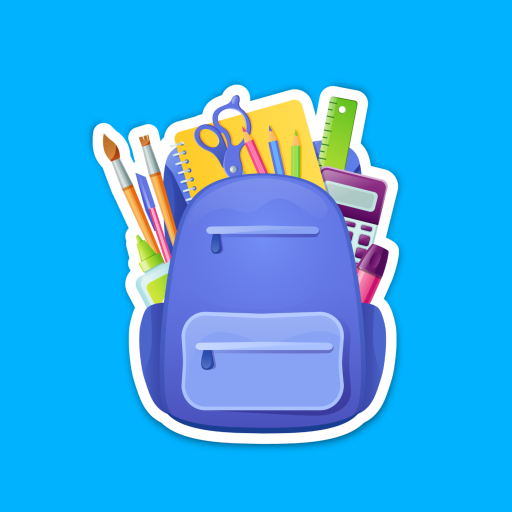Interleaved practice is a powerful study strategy that involves alternating different types of problems, topics, or skills within a single study session. Unlike the traditional “massed” practice, where you focus solely on one area until it’s mastered, interleaved practice improves retention and comprehension by mixing up the material. This technique has been especially effective for language learners, who can benefit from switching between vocabulary, grammar, pronunciation, and reading skills. This guide covers a step-by-step approach to interleaving, tips for staying engaged, and research-backed evidence supporting its effectiveness.
Table of Contents
Why Interleaved Practice Works for Language Learning
Language learning demands a wide range of skills, including vocabulary retention, grammar understanding, pronunciation, and reading comprehension. Interleaved practice supports these skills by requiring the brain to frequently switch contexts. These switching forces the brain to retrieve information from memory multiple times, reinforcing learning. Additionally, interleaving mimics real-life language use, where skills are rarely isolated. For example, in a conversation, you might need vocabulary, grammar, and pronunciation skills all at once.

Step-by-Step Guide to Implementing Interleaved Practice
Organize Study Material into Categories
Start by breaking down your language study material into categories, like vocabulary, grammar, pronunciation, and reading comprehension. Ensure each category has content at varying levels of difficulty. For example, vocabulary lists can include basic and advanced words, grammar exercises might cover multiple tenses, and reading passages could range from simple to complex.
Rotate Through Categories in Short Bursts
Spend 15–20 minutes on each category, then switch to another. For example, you might start with vocabulary flashcards, move on to grammar exercises, then practice pronunciation, and end with reading comprehension. This rotation keeps your mind alert and prevents the boredom that can come from focusing too long on one area.
Add New Material Gradually and Mix with Old
As you introduce new vocabulary or grammar structures, blend them with previously learned material. For instance, if you’re learning new vocabulary words, include them in a sentence with grammar rules you’ve already studied. This creates a varied and challenging review session, strengthening connections between old and new material.
Revisit Older Material Regularly
Make a point to review older material during each study session. For example, if you learned irregular verbs last week, include a few irregular verb exercises while you focus on new material. Revisiting older content helps combat the forgetting curve and ensures long-term retention.
Use Practice Tests that Cover Multiple Topics
Try creating practice tests that mix vocabulary, grammar, and comprehension questions. This could involve reading a passage that includes new vocabulary, then answering questions that test both comprehension and grammar. Practicing in this interleaved way prepares you for real-life language scenarios where multiple skills are needed at once.
Common Misconceptions about Interleaved Practice
Focused Practice is Always Better
A common belief is that focusing on one topic until it’s fully mastered is the most effective study method. However, research has shown that interleaved practice can actually improve long-term retention by forcing the brain to work harder at retrieval. Though it may feel more challenging, this “desirable difficulty” leads to stronger memory connections.
Interleaving is Too Complicated to Organize
While it might seem challenging to set up, interleaved practice is straightforward with a bit of planning. You can create a simple schedule with 15–20-minute blocks for each category, then rotate between these categories. Alternatively, use online tools or apps to organize your study sessions and ensure you’re mixing topics effectively.
Tips to Keep Interleaving Engaging
Set Small, Achievable Goals
Breaking down your goals makes study sessions feel more manageable. For example, set a goal to learn five new vocabulary words and complete two grammar exercises, instead of trying to master an entire topic in one sitting.
Incorporate Fun Resources
To stay engaged, mix traditional resources with more interactive options like language-learning apps, videos, or games. Watching a short video clip, for example, can be a good way to practice listening comprehension, which you can then alternate with grammar exercises or flashcard reviews.
Mix in Different Practice Formats
Interleaving is more effective when it involves varied formats. For instance, instead of only doing written exercises, mix in spoken practice, listening comprehension, and reading aloud. This variation helps strengthen language abilities and keeps study sessions interesting.

Evidence Supporting Interleaved Practice
Research in cognitive psychology highlights the benefits of interleaved practice for learning and memory. A study from Rohrer and Taylor (2007) showed that students who used interleaved practice outperformed those who used massed practice, especially in problem-solving and retention tests. Similarly, language learning research has found that students retain vocabulary better when they alternate study topics rather than focusing exclusively on one skill at a time. This technique’s effectiveness lies in its requirement for learners to frequently retrieve information in new contexts, which promotes more durable learning.
Who Can Benefit from Interleaved Practice?
Interleaved practice is particularly beneficial for students who struggle with boredom or find it hard to stay engaged with traditional study methods. By keeping sessions varied, this approach makes study time feel fresher and more dynamic. Language learners preparing for exams can also benefit, as interleaved practice better reflects the mixed skill demands of real-world language use.
Interleaved practice is a highly effective approach to language learning that can enhance memory retention and make study sessions more engaging. By rotating through vocabulary, grammar, pronunciation, and comprehension, learners can keep their brains active and better prepared for real-world application. While it may feel challenging at first, the benefits of interleaving—such as improved retention and reduced boredom—make it a valuable tool for students at all levels. With consistent practice, interleaved study sessions can help students achieve a well-rounded understanding of language, making it easier to retain and apply their skills in real-life situations.











